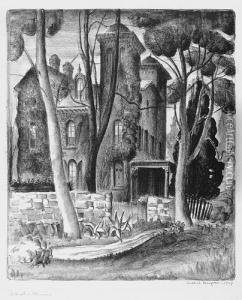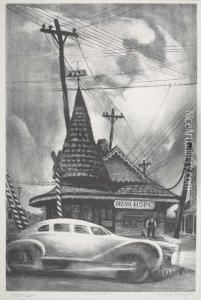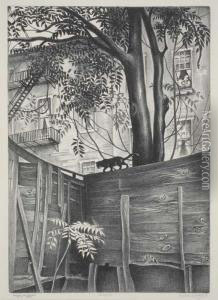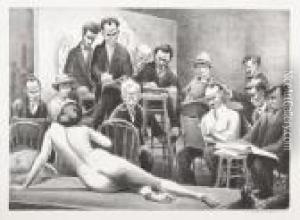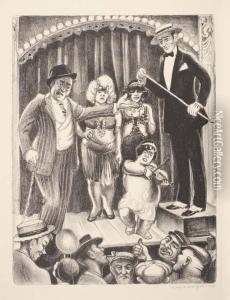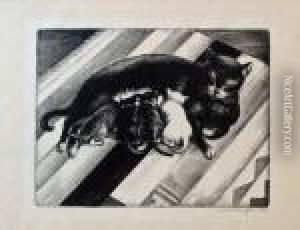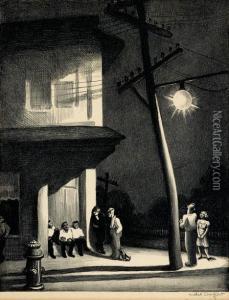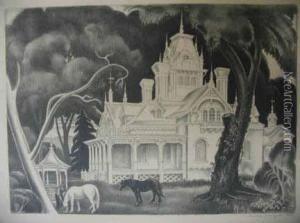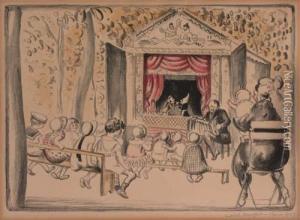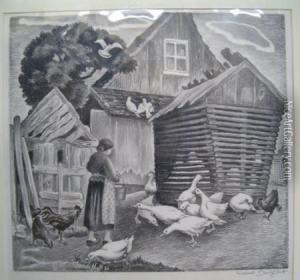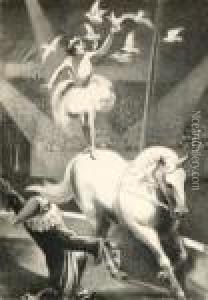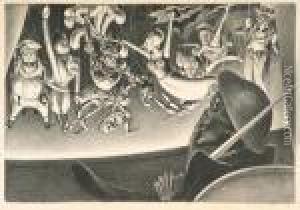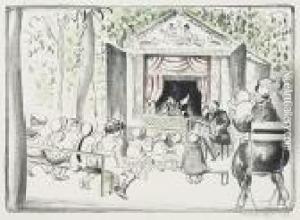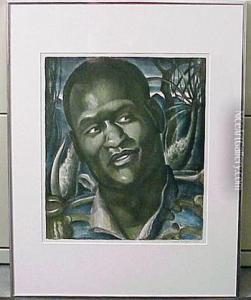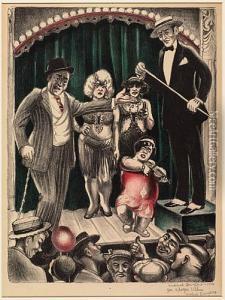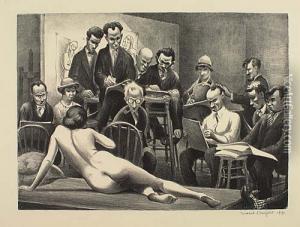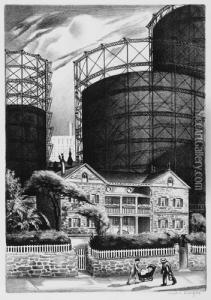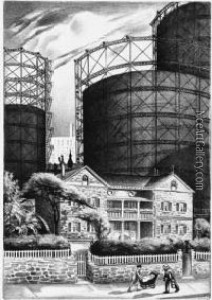Mabel Dwight Paintings
Mabel Dwight, born in Cincinnati, Ohio, was an American artist known for her lithographs that often contained a mixture of social commentary and humor. She grew up in an environment that fostered her artistic talents, and she began her artistic training at an early age. However, her career as an artist did not take off immediately. For many years, Dwight worked in a variety of jobs, including teaching and social work, before fully committing to her art in the 1920s.
During the 1920s, Dwight moved to Greenwich Village in New York City, which was a hub for artists, writers, and intellectuals. It was here that she became deeply involved in the art scene and began to develop her skills in printmaking, particularly lithography. Dwight's lithographs often depicted scenes of everyday life, with a focus on the quirks and idiosyncrasies of human behavior. She captured the spirit of her times with wit and insight, making her work popular among a broad audience.
Her work also occasionally addressed more serious social issues, reflecting the concerns of the Depression era in which she worked. Dwight was associated with the Federal Art Project of the Works Progress Administration (WPA), a New Deal program that funded the visual arts in the United States, and her work from this period reflects the program's focus on the American scene.
Despite the challenges of being a woman in a male-dominated art world, Dwight achieved significant recognition during her lifetime. She was featured in numerous exhibitions, and her work is included in the collections of several major museums. Mabel Dwight remains a respected figure in the history of American printmaking, remembered for her distinctive blend of social observation and gently satirical humor.
